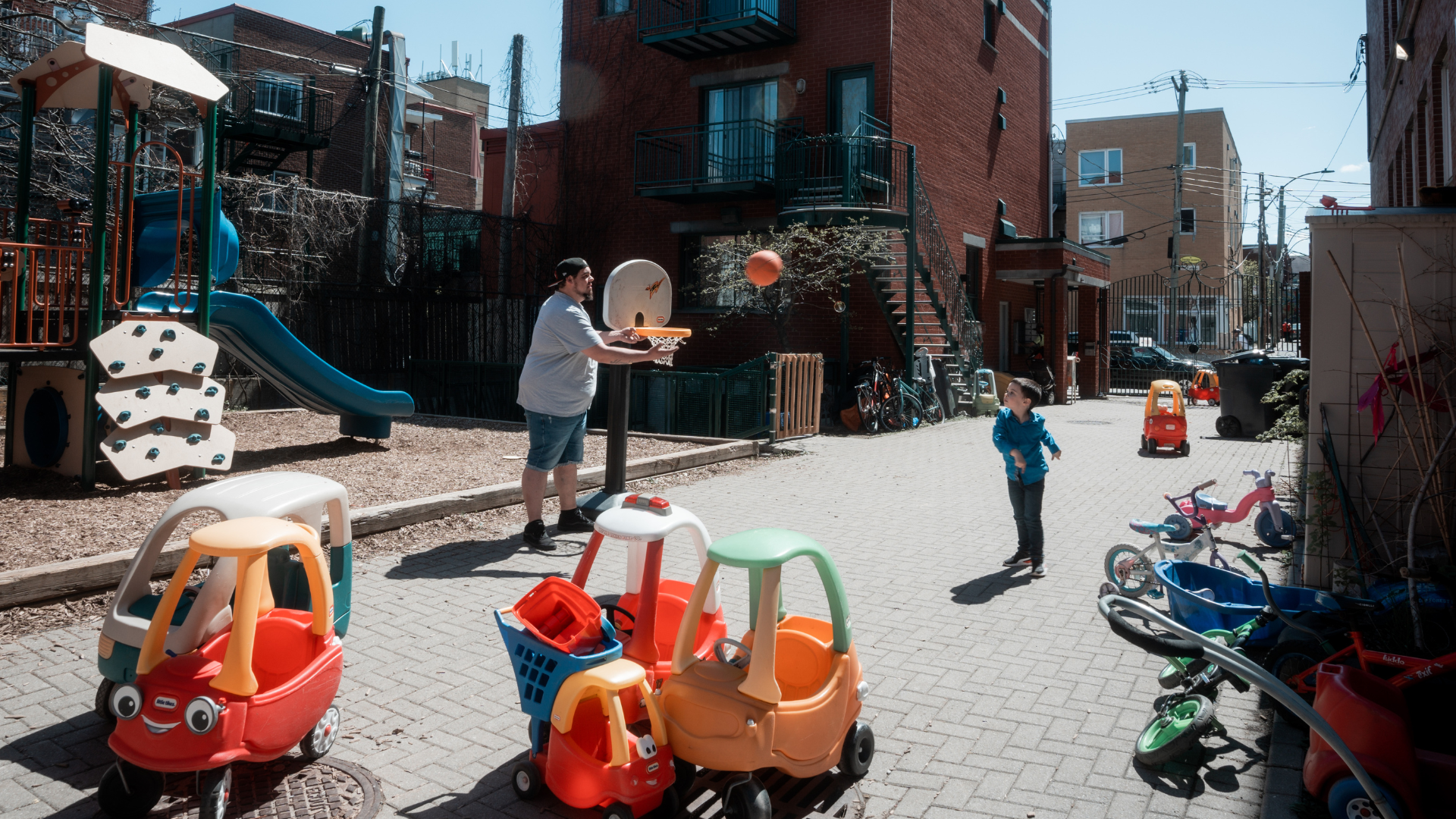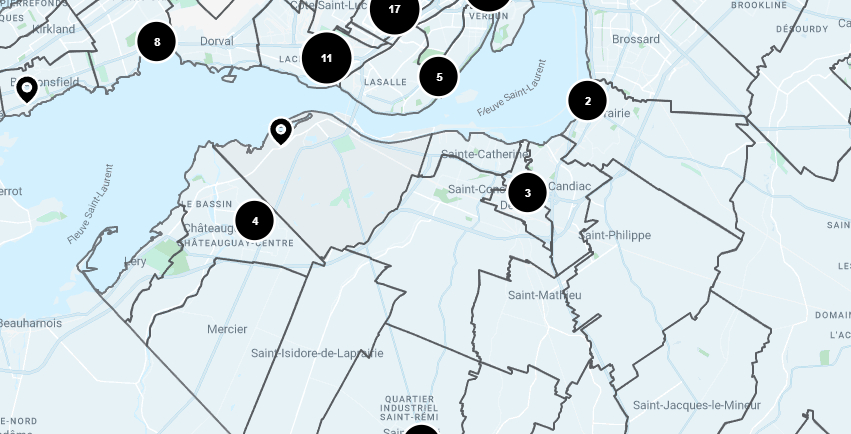
MRC de Roussillon
Snapshot of the
MRC de Roussillon
(Candiac, Châteauguay, Delson, La Prairie, Léry, Mercier, Saint-Constant, Saint-Isidore, Saint-Mathieu, Saint-Philippe and Sainte-Catherine)

Discover key facts
📍 Population – growth and notable presence of youth
Between 2016 and 2021, the MRC de Roussillon recorded population growth of +8%, matching that of La Vallée-du-Richelieu. These two territories experienced the fastest growth among the five MRCs within Centraide’s territory, outpacing the MRC average (+6%) and that of Montreal (+3%). Among the MRC’s 11 municipalities, home to 185,570 people, Châteauguay is by far the most populous (50,700 residents). The MRC and most of its municipalities stand out for their strong presence of children aged 0–17, representing around 23% of the population.
👪 Families – concentrated in Saint-Constant and Châteauguay
Families make up 42% of households in the MRC—a proportion higher than the South Shore average (37%) and similar to Laval (41%). Of the 30,240 families in the area, Saint-Constant and Châteauguay account for 5,130 and 7,995, respectively. Single-parent families are also more common in Châteauguay (27%, or 2,175 families).
🏚️ Poverty – concentrated in Châteauguay
4% of residents (6,475 people) live on a low income, slightly below the South Shore average (5%). Saint-Isidore and Châteauguay show the highest poverty rates (5%). Nearly 40% of the MRC’s low-income residents live in Châteauguay (2,455 people).
🌎 Indigenous population – significant presence
Due to its proximity to Kahnawà:ke, the MRC de Roussillon has the highest proportion of Indigenous residents on non-Indigenous territory within Centraide’s Greater Montreal area, with 3,435 people (1.8% of the population).
👨🏾🤝👨🏼 Immigration and diversity – Châteauguay stands out
Châteauguay stands out in the MRC for its higher rates of immigrant population (21%) and visible minority residents (23%), both above the South Shore averages (15% and 16%). Between 2016 and 2021, the MRC saw significant growth: +50% in immigrant residents and +64% in visible minority populations.
🏢 Housing – sharp rent increases
Between 2022 and 2024, the average rent for a two-bedroom apartment rose by 46% in the MRC, compared with 15% on the South Shore and 13% in Montreal—one of the steepest increases on Centraide’s territory. In 2024, the average two-bedroom rent reached $1,454. Nearly one-third of renter households (30%, or 5,300 households) spend too much of their income on housing, with even higher rates in Châteauguay (33%) and Candiac (35%), compared with 26% on the South Shore.

Dashboard
Consult this dashboard to access a wide range of demographic, socio-cultural/economic, and living-condition data.



